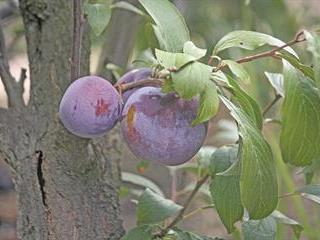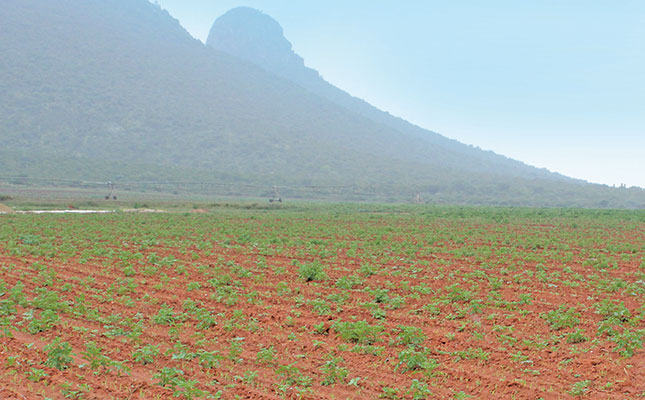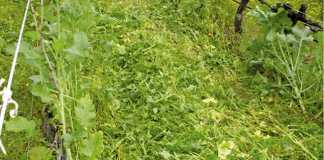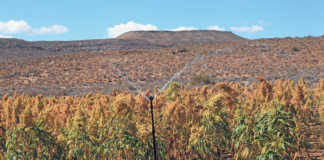
Dieback, the progressive death of fruit tree twigs and branches and even the complete death of the tree, is hardly a new phenomenon. The South African fruit industry has been battling it for years, according to Prof Piet Stassen.
The first reference to it in the literature is in 1905 and it is prevalent in other countries. In South Carolina in the US, for example, farmers struggle with ‘peach short life’ syndrome – the sudden death of young peach trees three to six years after planting. US researchers associate cold damage, Pseudomonas, Cytospora canker, ring nematodes, replant disease and sandy soil with the syndrome.
Bacterial canker complex is another form of dieback experienced by farmers in California, France and New Zealand. This is visible two to six years after planting.
According to Stassen, the wood of the affected areas shows discoloured streaks. Leaves and shoot growth wilt and die during the growing season while suckers grow out of the roots. A sour sap is secreted from the diseased tissue.
After extensive and ongoing research, Stassen has divided the occurrence of dieback in South Africa into three categories:
- Waterlogging
Orchards at the foot of a mountain or in low-lying regions are prone to waterlogging. The runoff from the slopes raises the water table, resulting in anaerobic conditions, which ultimately cause the roots to rot. Cyanide gas, produced by the anaerobic conditions, is released, causing dieback from the growing tips.
A high water table in spring is particularly dangerous to the trees when the trees are metabolically active, according to Stassen. The same situation can easily occur as a result of over-irrigation. “Trees suffering from this condition will typically have rotten roots,” Stassen points out.
To overcome the problem, farmers are advised to invest in good drainage before planting new trees.
“They should make use of cut-off furrows, drainage pipes and ridges to prevent stagnant water remaining in the orchard for long periods.”
Stassen adds that trees do not necessarily die from this condition, but their roots might become less efficient, resulting in growth problems and vulnerability to disease. This is especially the case in well-drained soil where water might be stagnant for a relatively short period.
- Death of young trees
Sometimes, trees die only a few weeks after being planted. “This could be due to problems with nursery material where root development was poor or damaged. The roots might also be dried out because of improper handling during transportation or planting,” explains Stassen.
The burning of roots due to compost or nitrogen inside a planting hole, or the use of grass herbicides, might also have a negative effect on the roots. Farmers should look out for these problems before planting; once trees are planted, it is too late.
“It is important that farmers supply trees with enough water and nutrition. This will foster the development of fine roots and a healthy root system. South Africa has poor soil. Therefore sufficient nitrogen application is needed for optimal plant growth,” says Stassen.
He adds that the problem is worse in sandy soil, which is common in the Western Cape, as nitrogen tends to leach away with the water in this soil type. He recommends that in such cases, farmers consider using slow-releasing or organic sources at more frequent applications.
- Bacterial canker and fungal infections
Bacterial canker, a serious disease among stone fruit, and fungal infections, are the third possible cause of dieback. Stassen suggests that these infections can lead to tree dieback when a certain combination of factors is present. These include ring nematodes, cold and wet conditions followed by high temperatures in spring, a high water table, sandy soil, poor cultivation practices, replant problems, sunburn on the bark, an inappropriate cultivar, low organic soil content and pruning wounds.
In his experience, trees usually die between their second and sixth season if they are affected by bacterial or fungal stem canker, depending on how they react to stress conditions. They die suddenly in spring, just before bud break, or fail to sprout. Symptoms differ according to the pathogen causing the problem.
Farmers should look out for dying flowers or a continuous orange/brown discolouration of the wood just beneath the bark of affected trees. “Bacterial canker is mainly a problem in sandy soil and soil with high counts of ring nematodes, but diagnostic analysis of dying trees during the past five years also implicates Botryosphaeria, Diaporthe, Leucostoma and other fungal pathogens as role players in tree dieback,” says Stassen.
In sum, he stresses that although conditions on farms vary widely, farmers should above all take care of the trees’ roots to help ensure the overall health of their orchards and prevent dieback.
Email Prof Piet Stassen at [email protected].













